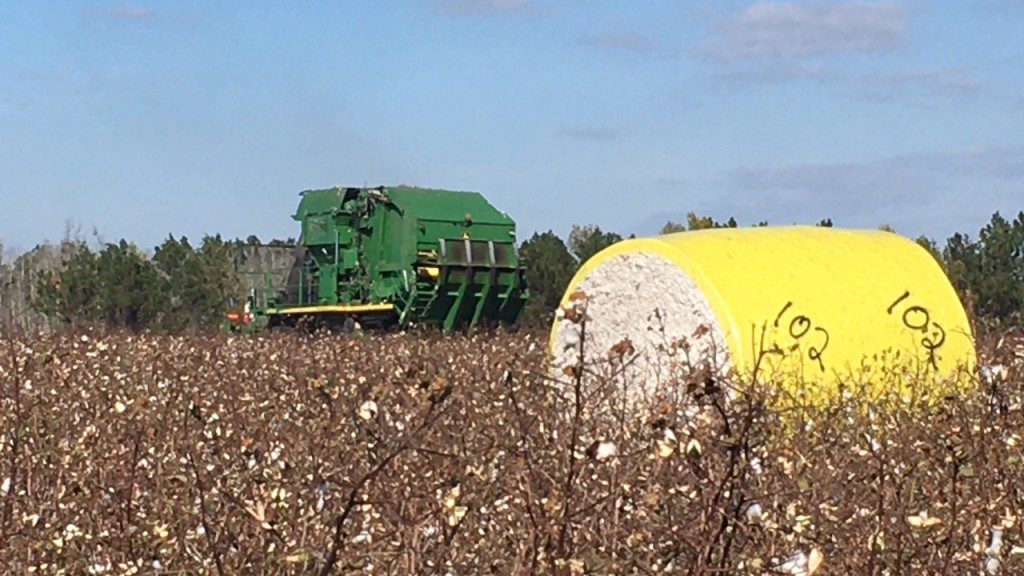Jeremy Kichler
-
Chlorothalonil is an important fungicide for management of leaf spot diseases of peanut, a shortage could have a significant effect on our growers. Below are some recommendations for dealing with challenges that could occur. The first two applications of chlorothalonil (30 and 40 DAP, days after planting) can be removed IF Proline, 5.7 lf oz/A…
Posted in: Peanuts -
It is going to happen to cotton growers sooner or later. Growers are going to have Palmer amaranth escapes and how we deal with them is important and can impact the bottom line. Starting off clean during planting time is critical when trying to manage glyphosate resistant Palmer amaranth. Situations are going to come up and below…
-
Peanuts are going in the ground and a rain will be needed soon in the Colquitt County area. I have received a question or two about watering peanuts. Wesley Porter, UGA Irrigation Specialist, says “However, early May has brought some very good weather for both planting and emergence. We have had adequate rainfall and enough…
-
Last year sorghum producers struggled with sugarcane aphid in Colquitt County. I received questions about how to manage sugarcane aphid and some fields were treated for this pest. Dr. David Buntin, UGA Entomologist, has some management tips for sugarcane aphid. Management Practices for SCA Aphid 1) Plant early – Although the aphid was not in Georgia…
-
Seedling disease is something that can frustrate cotton growers. Economic losses to seedling diseases can be significant at specific locations,especially when weather conditions are cool and wet at planting time and the grower is not able practice good crop rotation. Below are good management practices to reduce the chance of seedling disease in cotton according…
Posted in: Cotton -
Cool and wet weather has vegetable growers looking for information on disease management in vegetables. Below are links to vegetable spray guides for commercial growers. Cabbage https://plantpath.caes.uga.edu/extension/extension/documents/BroccoliCabbageFungicideSprayPrograms2014.pdf Tomatoes https://plantpath.caes.uga.edu/extension/extension/documents/SGATomatoFungicideSprayPrograms2014.pdf Squash https://plantpath.caes.uga.edu/extension/extension/documents/SquashFungicideSprayPrograms2014.pdf Pepper https://plantpath.caes.uga.edu/extension/extension/documents/PepperFungicideSprayPrograms2014.pdf Watermelon https://plantpath.caes.uga.edu/extension/extension/documents/WatermelonFungicideSprayPrograms2014.pdf Other guides https://plantpath.caes.uga.edu/extension/extension/VegetableSprayGuides.html
-
The Georgia Pest Control Management Handbook is great resource for pesticide information not only for county agents but for farmers, retailers and gardeners. This reference can be obtained online at the following links Commercial: https://extension.uga.edu/publications/detail.cfm?number=SB28 Homeowner: https://extension.uga.edu/publications/detail.cfm?number=SB48
Posted in: Agribusiness -
The Colquitt County area has had rain this week and the area wheat crop is around Feekes stage 10 of development. This has sparked some questions and concerns about fusarium head blight. Below are some questions that I have been getting about this subject and would like to thank Dr. Alfredo Martinez, UGA Plant Pathologist, for…
Posted in: Small Grains -
A pecan grafting clinic will be held at the UGA Ponder Research Farm pecan orchard on Tuesday April 21, 2015. Grafting techniques discussed will be 4-flap or banana grafting and bark grafting. The grafting clinic will begin at 10:00 a.m. See below for directions: UGA Ponder Farm Directions 28 Ty Ty Whiddon Mill RD Ty…
Posted in: Pecans -
Forage production is at the heart of Georgia’s livestock industries. Our diverse forage systems are some of the best in the world. For the fourth straight year, the Georgia Cattlemen’s Annual Convention begins with a focus on forages with the Georgia Forages’ Conference starting off the week’s events. This Conference is planned for April 1-2, 2015 at…
